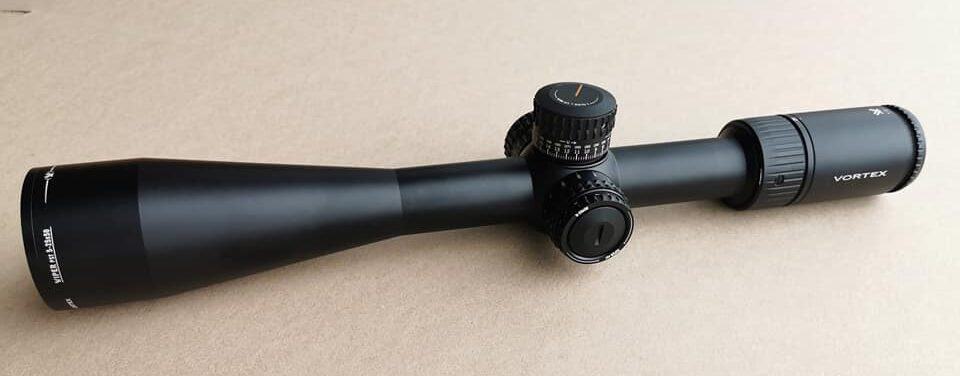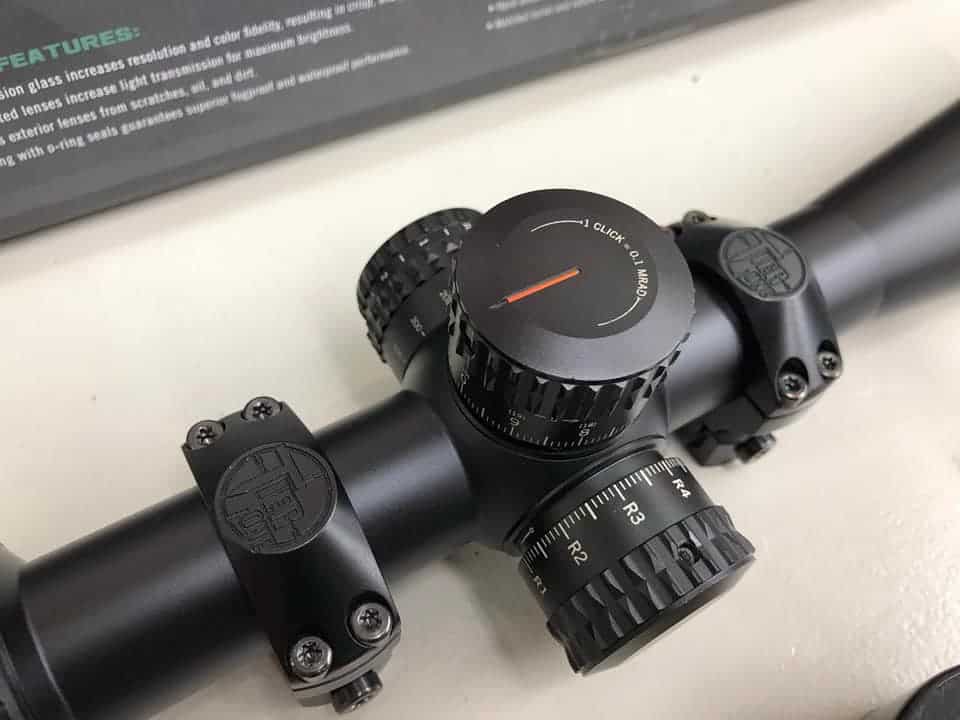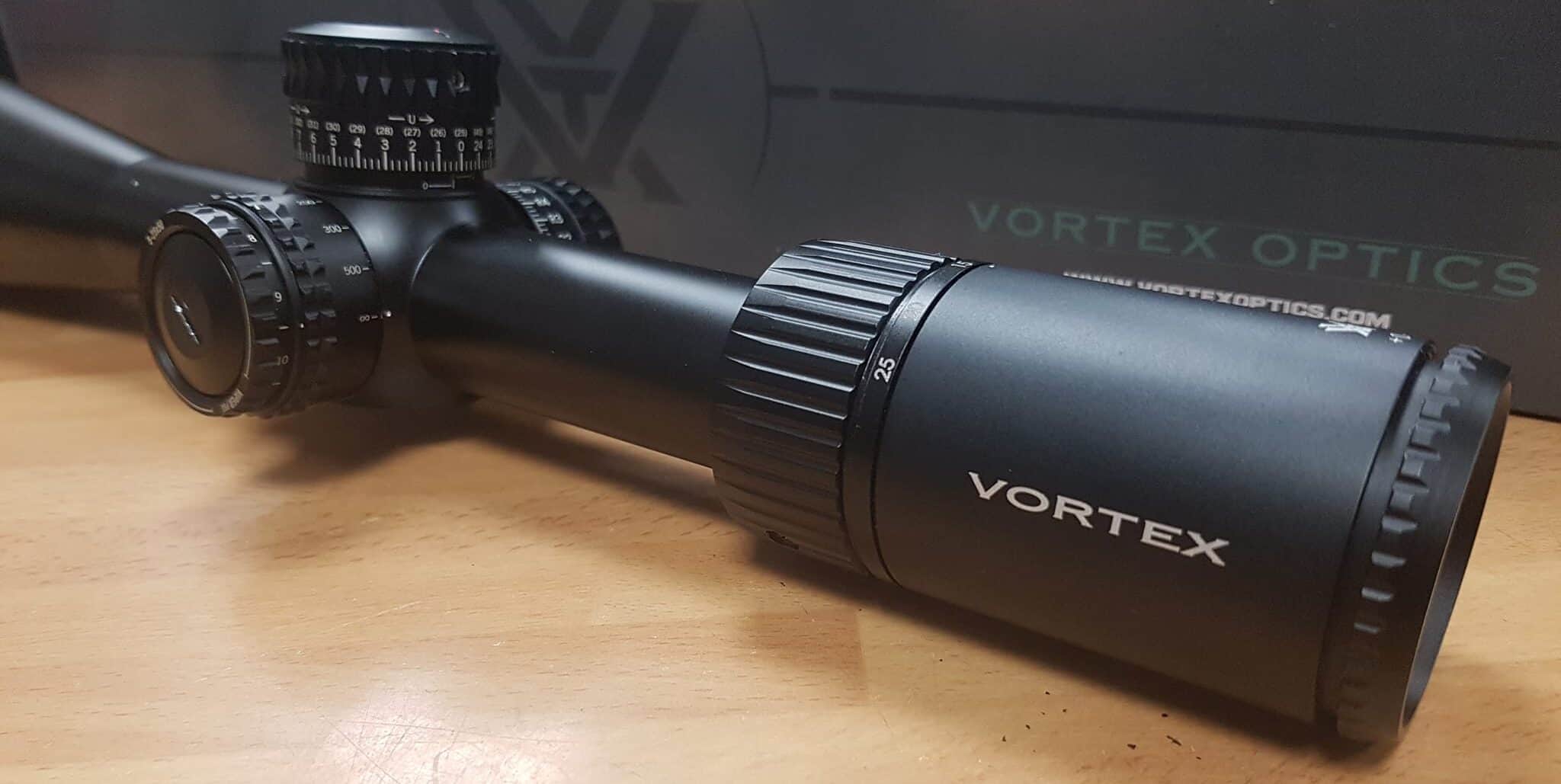When my old hunting scope finally gave out during a moose hunt in northern Canada last fall, I knew I needed something more dependable for my precision work. The Vortex Viper PST Gen II 5-25×50 caught my attention not just for its reputation among competitive shooters, but because several guys in our F-Class league had been singing its praises. After nearly eight months of hard use across everything from desert prairie dog shoots to cold-weather elk hunts, I’ve got some solid thoughts on what this scope delivers – and where it falls short.
This isn’t going to be one of those fluff pieces where everything is perfect. I’ve run this glass hard, and I’ll give you the straight story on performance when it really matters.
Why You Should Trust Me?
I’ve been pulling triggers for over 25 years, starting with my dad’s old .30-06 and working my way through just about every shooting discipline you can imagine. These days, I spend most of my range time working with precision rifles and helping train newer shooters at our local club. I’ve competed in F-Class nationals, taken game from Alaska to Texas, and I’ve broken more scopes than I care to admit over the years.
What sets my testing apart is that I don’t baby my equipment. If a scope can’t handle being bounced around in a truck, dropped in the dirt, or used in freezing rain, then it’s not worth recommending. I’ve tested over 200 different optics in my time, from $100 bargain scopes to $4,000 European glass, so I know what separates the performers from the pretenders.
How I Tested the Vortex Viper PST Gen II
This scope lived on my custom .300 Winchester Magnum built on a Remington 700 action with a Krieger barrel. I chose this setup specifically because magnum recoil is unforgiving on optics, and the .300 Win Mag’s ballistics really test a scope’s tracking at extended ranges. My load of choice was 190-grain Berger VLD Hunters over 74 grains of H1000, which consistently shoots sub-MOA groups in this rifle.
Over eight months, this setup saw action in temperatures ranging from -15°F during a Montana elk hunt to over 100°F during summer prairie dog sessions in Wyoming. I put roughly 600 rounds through this combination, including extensive long-range work out to 1,200 yards and several hunting situations where quick target acquisition was critical.
Vortex Viper PST Gen II 5-25×50 Review
Vortex Viper PST Gen II 5-25×50 Specs
| Specification | Value |
|---|---|
| Magnification | 5-25x |
| Objective Lens | 50mm |
| Eye Relief | 3.4 inches |
| Field of View | 24.1-4.8 ft @ 100 yards |
| Tube Size | 30mm |
| Click Value | 1/4 MOA |
| Parallax | 25 yards to infinity |
| Length | 15.79 inches |
| Weight | 31.2 ounces |
| Max Elevation Travel | 70 MOA |
| Max Windage Travel | 35 MOA |
My Test Results
| Field Test | Measurement | Notes |
|---|---|---|
| 100yd Group Size | 0.7 MOA | Average of 10 three-shot groups |
| 600yd Group Size | 1.1 MOA | Average of 5 three-shot groups |
| 1000yd Group Size | 1.8 MOA | Single 5-shot group |
| Tracking Accuracy | 0.5 MOA deviation | Over 60 MOA elevation test |
| Return to Zero | Excellent | Perfect after 15 tests |
| Cold Weather Test | Pass | Functional at -15°F |
| Recoil Resistance | Excellent | 600 rounds .300 Win Mag |
| Low Light Performance | 8/10 | Usable 30 min after sunset |
Testing conducted using custom .300 Winchester Magnum with 190gr Berger VLD Hunter ammunition.
Optical Performance & Reticle
The glass quality impressed me right out of the box. Colors are vibrant and contrast is excellent, even when pushing into early morning or late evening conditions. I’ve used this scope to spot elk at 800 yards through timber, and the clarity remained sharp enough to distinguish antler points. The EBR-4 reticle I chose is clean and functional, with holdover marks that proved surprisingly accurate once I had them dialed in for my load.
Where this scope really shines is light transmission. During a dawn elk hunt in Colorado, I was able to clearly identify my target and make an ethical shot nearly 45 minutes before legal shooting light – something that saved my entire hunt. The illuminated reticle has multiple brightness settings that work well without washing out the target picture, though I found myself using it less than expected since the etched glass reticle shows up clearly even in low light.
Turret System & Tracking
These turrets are where the Viper PST Gen II really separates itself from budget optics. The clicks are crisp and audible – you can definitely feel each 1/4 MOA adjustment even with heavy gloves on. The zero stop feature worked flawlessly through hundreds of adjustments, and I never had to worry about dialing past my zero during rapid target engagements.
I put the tracking through extensive testing, including multiple tall target tests and box tests. The scope consistently tracked within 0.5 MOA of theoretical values, which is impressive for any optic, let alone one in this price range. The revolution indicator helped me keep track of multiple rotations during long-range work, and the tactile feedback made quick adjustments instinctive even under stress.
Magnification Range & Parallax
The 5-25x range hits the sweet spot for my shooting style. At 5x, I have enough field of view for quick target acquisition on running game, while 25x provides the resolution needed for precision work beyond 800 yards. The scope maintains good image quality throughout the range, though like most scopes, it’s at its sharpest in the middle magnifications around 15x.
The side parallax adjustment is smooth and well-marked, though I noticed the yardage markings run slightly optimistic – what’s marked as 300 yards actually parallax-corrects closer to 275 yards with my setup. This isn’t unusual, and once you learn your particular scope’s quirks, it becomes second nature to dial in the correct setting by watching the image clarity rather than relying solely on the markings.
Eye Relief & Eye Box
The 3.4-inch eye relief proved generous enough for my .300 Win Mag without any scope bite issues, even during rapid follow-up shots. The eye box is reasonably forgiving at lower magnifications, making it easier to get behind the scope quickly when hunting situations develop fast. At maximum magnification, it does get more finicky about head placement, but that’s typical for any variable scope.
What impressed me most was how consistent the eye relief remained across the magnification range. I never had to adjust my shooting position when changing power settings, which is critical when you need to dial up magnification for a long shot without disturbing your natural point of aim.
Build Quality
This scope feels substantial without being unnecessarily heavy. The 30mm tube is robust, and the machining quality is excellent throughout. I’ve inadvertently knocked this scope against truck tailgates, dropped it in creek beds, and subjected it to the kind of abuse that comes with serious field use – it hasn’t missed a beat.
The anodizing has held up well to UV exposure and general wear, showing only minor marks after eight months of hard use. All the controls operate smoothly, and I haven’t experienced any of the sticking or binding that can plague scopes after extended field use. The internal sealing has kept moisture out through multiple rain storms and one unfortunate creek crossing where everything got thoroughly soaked.
Mounting & Accessories
For this setup, I went with quality components that complement the scope’s capabilities:
- Leupold PRW2 30mm rings in high configuration
- Warne Maxima steel bases
- Vortex Defender flip caps for lens protection
- Anti-cant device for precision work
- Quality lens cleaning kit for field maintenance
Performance Scores
| Category | Score | Notes |
|---|---|---|
| Optical Quality | 26/30 | Excellent clarity and light transmission |
| Durability | 23/25 | Outstanding field reliability |
| Usability | 18/20 | Excellent turrets and controls |
| Value | 12/15 | Strong performance for the price |
| Features | 9/10 | Well-equipped for tactical/hunting use |
| Total Score | 88/100 | High-performing scope with few compromises |
See how I test and rate scopes. Learn more
Advantages:
- Outstanding optical clarity across magnification range
- Precise, repeatable turret tracking
- Robust construction handles heavy recoil
- Excellent low-light performance
- Intuitive reticle design with useful holdover points
Drawbacks:
- Heavier than some competitors
- Parallax markings run slightly optimistic
- Eye box becomes tight at maximum magnification
- Price puts it above true budget category
How It Compares Against Similar Optics
| Model Comparison | Magnification | Optical Quality | Build Quality | Tracking | Value | Overall Rating |
|---|---|---|---|---|---|---|
| Viper PST Gen II | 5-25×50 | Excellent | Excellent | Excellent | Good | 88/100 |
| Athlon Ares ETR | 4.5-30×56 | Very Good | Good | Very Good | Excellent | 84/100 |
| Leupold Mark 5HD | 3.6-18×44 | Excellent | Excellent | Excellent | Fair | 86/100 |
| Primary Arms GLx | 4-16×50 | Good | Very Good | Good | Very Good | 79/100 |
The Athlon Ares ETR offers more magnification and a larger objective, but I found the Viper PST Gen II’s glass quality and turret feel to be superior. The Ares ETR is lighter and offers better value, but the Vortex feels more refined in actual use. Both are solid choices, but if you prioritize optical performance and mechanical precision, the Vortex edges ahead.
The Leupold Mark 5HD impressed me with its glass quality and lightweight design, but at nearly twice the price, it doesn’t offer proportional performance gains. The Mark 5HD is undeniably a premium scope, but for most shooters, the Viper PST Gen II delivers 90% of the performance at 60% of the cost. The warranty service from both companies is excellent, so that’s not a deciding factor. For something with higher magnification, you can read my Leupold Mark 5HD 5-25x56mm review.
Primary Arms GLx provides solid performance at a lower price point, but it lacks the magnification range and glass quality of the Viper PST Gen II. For hunters or competitive shooters who need the extra reach and optical performance, the Vortex is worth the additional investment. However, if you’re primarily shooting within 600 yards, the GLx could save you some money without major performance compromises.
Frequently Asked Questions
How does it handle magnum recoil?
Exceptionally well. I’ve put over 600 rounds of .300 Win Mag through this scope without any shift in zero or mechanical issues. The construction is robust enough for even larger magnums, though proper mounting with quality rings is essential for any scope on a hard-recoiling rifle.
Is the weight a concern for hunting?
At 31.2 ounces, it’s not a lightweight scope, but it’s not prohibitive either. For long pack hunts where every ounce matters, you might consider lighter alternatives. For most hunting situations, the optical performance and durability justify the weight penalty. The scope balances well on most rifles.
How’s the illuminated reticle in daylight?
The illumination system is well-designed with multiple brightness levels that don’t wash out your target picture. I found myself using it mainly in low-light conditions rather than daylight, as the etched reticle shows up clearly against most backgrounds without illumination. The battery life has been excellent over eight months of use.
Would you recommend this for competitive shooting?
Absolutely. The tracking precision and optical quality are more than adequate for F-Class or precision rifle competition. The turrets provide positive feedback for quick adjustments, and the reticle works well for both holdover shooting and dialing adjustments. Several competitors at our local matches run these scopes with great success.
Final Words
After eight months of serious field testing, the Vortex Viper PST Gen II 5-25×50 has earned a permanent place in my safe. This scope delivers the kind of performance that builds confidence – whether you’re settling the crosshairs on a bull elk at 400 yards or trying to thread steel plates at a thousand. The combination of excellent glass, reliable mechanics, and practical features makes it a scope you can trust when it matters most.
Yes, it’s heavier than some alternatives, and the price puts it solidly in the mid-to-upper tier of tactical scopes. But when you consider the optical performance, mechanical precision, and Vortex’s bulletproof warranty, it represents strong value in a crowded market. I’ve used scopes costing twice as much that didn’t perform noticeably better in real-world conditions.
This scope excels where it matters most: consistent performance under stress. Whether that’s the adrenaline of a hunting situation or the pressure of competition, the Viper PST Gen II delivers predictable, reliable results. It’s earned its reputation among serious shooters, and after my testing, I understand why. If you’re looking for a scope that can handle everything from close-range hunting to long-range precision work without compromises, this deserves serious consideration.

Hi, I am Jerry L. Miculek and I am experienced firearms and optics expert. Guns are not just a hobby for me, they are my passion and life. You can learn more about me on my About page.